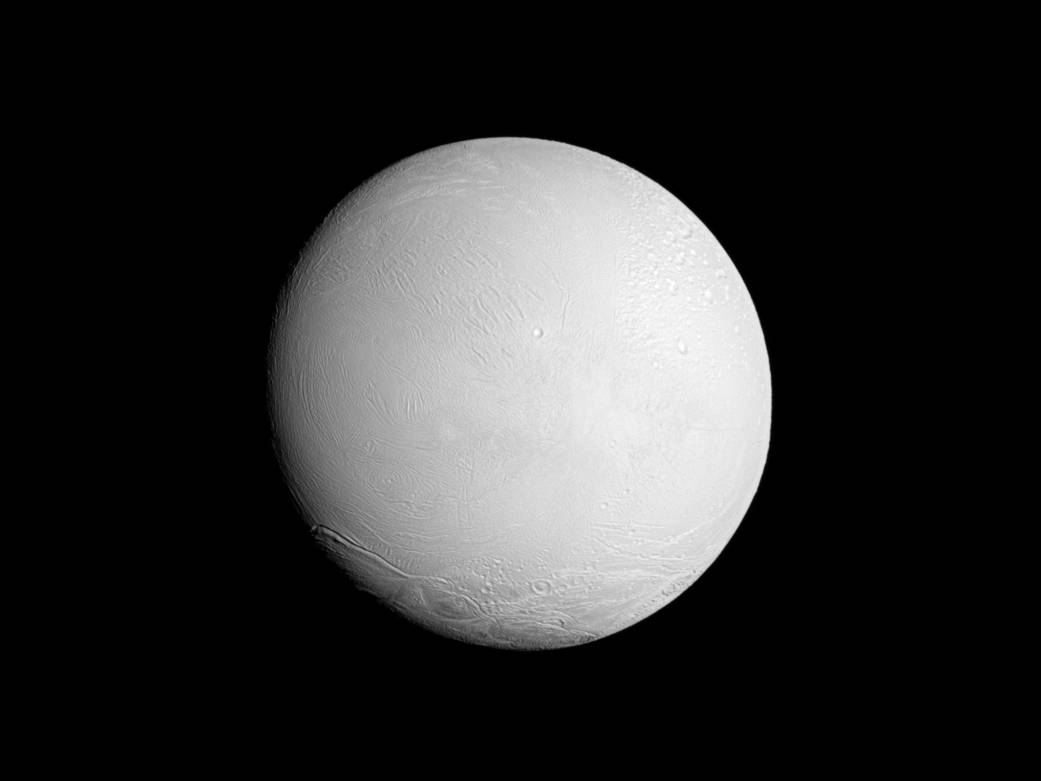
The Cassini spacecraft looks at a brightly illuminated Enceladus and examines the surface of the leading hemisphere of this Saturnian moon.
See PIA11685 to learn more about the surface of Enceladus. See PIA11688 to learn about the jets of water ice emanating from the moon’s south polar region. North on Enceladus (313 miles across, or 504 kilometers) is up and rotated 21 degrees to the right.
The image was taken in visible light with the Cassini spacecraft narrow-angle camera on Nov. 6, 2011. The view was obtained at a distance of approximately 67,700 miles (109,000 kilometers) from Enceladus and at a Sun-Enceladus-spacecraft, or phase, angle of 21 degrees. Image scale is 2,130 feet (649 meters) per pixel.
The Cassini-Huygens mission is a cooperative project of NASA, the European Space Agency and the Italian Space Agency. The Jet Propulsion Laboratory, a division of the California Institute of Technology in Pasadena, manages the mission for NASA’s Science Mission Directorate, Washington, D.C. The Cassini orbiter and its two onboard cameras were designed, developed and assembled at JPL. The imaging operations center is based at the Space Science Institute in Boulder, Colo.
For more information about the Cassini-Huygens mission visit https://www.nasa.gov/cassini and http://saturn.jpl.nasa.gov . The Cassini imaging team homepage is at http://ciclops.org
Image credit: NASA/JPL-Caltech/Space Science Institute
Credit: NASA/JPL-Caltech/Space Science Institute

























